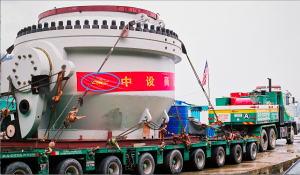
Sarawak Report has consulted a top British dam engineer about the repairs currently under-way on the newly installed turbines at the Murum Dam.
Dr Phillip Williams of Williams Associates, San Fransciso, is an expert in hydraulics. We showed him the leaked reports on the defects affecting the Chinese made turbines installed at Murum.
We also forwarded him the recent responses by SEB’s CEO Torstein Sjotveit, claiming that the defects had been “detected at an early stage” and are “rectifiable”, along with the SEB Press Release entitled “Murum Hydro-electric Project is Completely Safe”.
Dr Williams has responded that he agrees with Berkeley University’s Professor Daniel Kammen that in order to fix the problem the turbines should be removed and repaired properly in a machine shop or replaced entirely:
“I am very sceptical if it can be done in situ. The thing that leapt out from the pictures [of the faulty turbine blades] was that these are defects that would cause cavitation and when you get cavitation it causes erosion very quickly. To fix it you have to have the blades perfectly balanced.
What they [SEB] are doing is taking a very big risk, because they will invest a lot of time and expense in this [repair] and the only way they are going to know if it works, is if it works!”, Dr William told Sarawak Report.
Dr Williams pointed out that the weaknesses identified in the Murum turbine blades, including imperfections detected in the metal, represent the same sort of issue that caused catastrophic failure in the Russian hydro-power station, Sayano-Shushenskaya, in 2009, causing a turbine to break through its casing and destroy the pump room, killing 75 people.
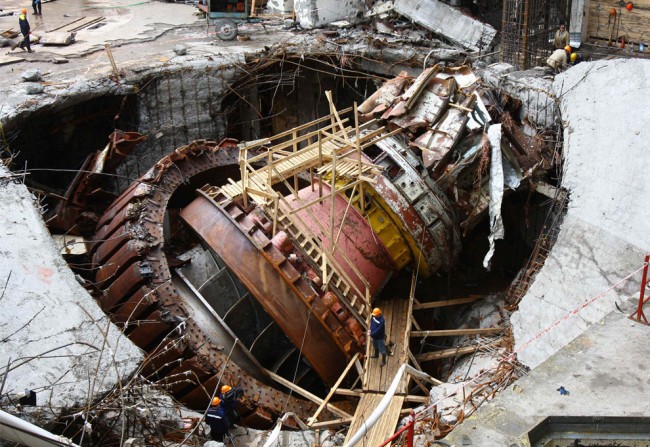
“It was the same sort of issue with the Russian turbine, a massive, catastrophic failure. It can unbalance the blades and certainly impair the efficiency of the machine. Cavitation is the biggest problem in these turbines, that is why it [the surface] has to be so smooth, with no imperfections. Cavitations cause deep pitting and fragmentation – pieces of the blades come off and unbalance the runners. Once that happens you are in a bad way”
Sarawak Report has queried the claim by SEB chief Torstein Sjotveit that the problems were “detected at an early stage” – the defects had been kept secret until we obtained a leaked copy of the devastating report by the Norwegian firm Norconsult detailing the faults and declaring the turbines “not suitable for installation or operation”.
Dr Williams responded that ‘early-stage’ should mean pre-installation:
“The time to fix it is before you install – it really is surprising that they [SEB] have done that. It is not normal procedure. This is a major failure of quality control processes, which should be routine in a project of this magnitude. It raises questions about the other parts of their quality assurance processes and it is time to start asking questions about other aspects of this dam. Generally, you have a monitoring system in place to anticipate and deal with problems like this.
If you look at the operating lifetime of these huge dams and look at the potential consequences of a dam failure, I would draw an analogy between nuclear power plants and dam safety. It is very disturbing. If you are slack on something like this [turbine quality], what else has been going on in the construction of this dam?”
Questions over Chinese dam projects world-wide
These are devastating criticisms by experts and SEB needs to find some convincing answers.

Dr Phillip Williams’ comments about potential wider construction issues serves as a reminder of the problems exposed earlier at the neighbouring Bakun Dam, revealed by Sarawak Report in 2010.
In this case leaked video and documents revealed that workers had been watering down the concrete mix before applying it to the face of the dam wall.
Insiders admitted that it was a regular practice, which dam engineers confirm could result in dangerous cracking.
A lack of sufficient quality control measures by the Chinese construction company Sino-Hydro was identified as the problem in the case of Bakun by local managers on the site, speaking to Sarawak Report.
Sino Hydro were working to tight time constraints and budgets imposed for political reasons, say ground staff, and they did not therefore make quality and safety their priority concerns.
Dr Williams believes similar issues are likely to have affected the management of Murum by the Three Gorges Dam Company, another Chinese state-owned company, which has likewise been largely protected from scrutiny for political reasons:
“If this dam was being constructed by a western engineering company they would never be able to get away with this sort of quality control issue. It is only when you can operate with secrecy and lack of accountability like these Chinese state companies have been able to do”
Patricia Adams, a Canadian based writer for the environmental advocacy group Probe International, has investigated the phenomenon of China’s global dam building programmes, which she says represent a real danger to developing countries, including Sarawak.
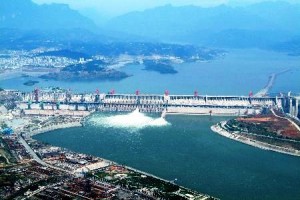
Mega-dam building is a very recent technology and is still at an experimental stage, with China having very much learnt from western engineering companies.
“At the time of the building of Three Gorges in China, the country did not have its own capacity to build such a dam” says Adams, so they contracted foreign companies to transfer the technology.
However, quality control particularly under state controlled industries in China is nothing like at the level expected in technically advanced, democratic countries warns Adams.
She says that her investigations have revealed that appalling quality control failures are “entirely common in the production process in China”:
“There is no liability; the judicial system doesn’t function to protect people; there is no accountability; no consumer legislation; you get ‘telephone justice” i.e. the party officials ring the judge and tell them what their ruling should be. And there are no production standards. You cannot trust the quality of anything coming out of China – if you have a state-owned enterprise you have secrecy, no transparency, you can’t hold them to account in a court of law and if you sue them you will get nowhere” Adams told Sarawak Report.
Yet following the construction of Three Gorges, the largest dam in the world, there is now a huge dam-building work force and capacity in China, which the country is using to try and export its own political influence world-wide.
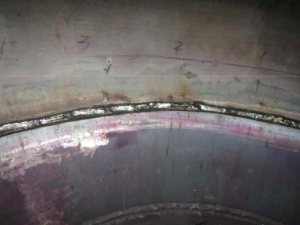
It has been widely observed that projects such as the Murum Dam, which was begun in secret in the heart of the Sarawak jungle on tribal territory, would have been far too controversial for any Western company to get involved in without far more scrutiny, checks and enquiries.
Yet China’s state companies have been happy to get involved here and in many other similar controversial projects in Africa and elsewhere, where the environmental and human rights issues are ignored by oppressive governments.
After all, Chinese workers spent two years blasting out tunnels at Murum before the rest of Sarawak even learnt (thanks to a leak by the Bruno Manser Fund) what they were up to in the jungle.
Likewise, concerns about native protests have been brushed aside by Sarawak’s Taib Mahmud, who is making billions out of the project, and his puppet successor Adenan Satem:
“The people of Sarawak are not interested in human rights. They are more concerned with their rights to fresh water and electricity,” Chief Minister Adenan Satem – July 2, 2014.
The problem with such arguments, say the critics, is that so far Sarawak’s dam building programme has brought little electricity or water to the rural communities, even to those in the immediate vicinity of the hydro-power plants. Instead the electric power is being exported towards industrial areas.
Corruption and safety are issues in mega-dam construction
Dr Phil Williams further warns that the Chinese are new-commers to a still very new technology that no one really still fully understands:
“Mega-dam technology is only 60-70 years old and has not many times been tested under extreme events. And there are a lot of questions over the Three Gorges Dam and a lot of secrecy. We are actually seeing a lot of things happening at Three Gorges Dam that critics said would happen. It is disturbing that you have an operation now exporting the technology under the same level of secrecy and lack of accountability to other countries”, he said.

Indeed, China’s present anti-corruption drive has seen the recent sacking of the two top officials of the very same Three Gorges Dam company behind the building of Murum.
The Chinese mega-project itself is now the subject of a major national scandal, relating to the theft of funds and quality controls.
Given these same company chiefs were the men in charge when Murum Dam was commissioned and built, it begs questions over the easy complacency of SEB’s Norwegian boss, who declared this week that the “Murum Hydroelectric Project is Completely Safe” and the turbine defects can be easily “rectified”.
Politics first, safety second?
According to Patricia Adams, state owned Chinese power companies are politically accountable, rather than profit driven and accountable to consumers, which make their priorities entirely different:
“If you have a profit driven company, then the incentive is not to make mistakes. In any such company, if it makes faulty products, heads will roll. But, in a politically driven enterprise your are up against a deadline and a fixed budget and you are meeting a political objective and not placing engineering excellence and the quality of the product as your top priority, nor are you so worried about keeping within the law.
State-owned enterprises in China are not profit seeking they are politically driven and answerable to the head of the party, so their version of moral hazard is very different. They are serving a political master, not a legal master, or the public or the laws.
This is one of the biggest problems with China building dams around the world. These investments are not necessarily about efficiency, they are for political reasons and they are clouded in secrecy”
The problem becomes worse when a company like this is operating in a country like Sarawak, which also suffers from lack of transparency and lack of accountability under the Taib regime.
Mega-dams impoverish host countries!
The concerns about the quality of construction of the Murum Dam and the motivation for building the SCORE programme of mega-dams have arisen in the very same week as the publication of another devastating official government audit, produced by the SEB chief Torstein Sjotveit’s own home country of Norway.
After years of alleged stone-walling by the Norwegian ministries, which have been funding hydro-power projects around the world, the Auditor General’s office has issued a highly critical analysis of the country’s investments in such projects.
Its conclusion is that investing in dams in developing countries has done nothing to improve the lives of the poor, even though much of this investment has been paid for out of Norway’s development budgets!:
“Norwegian assistance to clean energy has not led to a noticeable increase in power generation and has contributed little to improving living conditions for the poor in those countries that have been prioritized for such support.” [Norwgian Government audit]
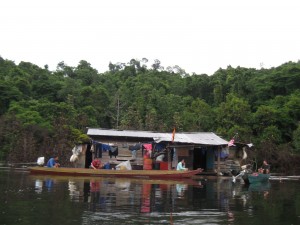
‘Clean energy’?
Just as reprehensible is the fact that countries like Norway and individuals like Sjotveit have up till now relied on presenting dams as ‘green’, ‘clean energy’ projects and ‘good for global warming’.
Dams have been financed out of clean energy and climate change budgets, whilst in fact they are heavily instrumental in making climate change worse!
The problems posed by mega-dams in terms of producing huge volumes of green house gases are well recognised by scientists, while the environmental destruction has been appalling.
And what is ‘clean’ about the of smelters and other dangerous, polluting factories planned by Sarawak’s SCORE project to be the end users of the hydro-electric dams?
Sarawak Report suggests that the people of Sarawak are suffering from having the wool pulled over their eyes by greedy politicians and their employees over these experimental and risky dam projects known as SCORE.
After this latest scandal surely the public deserves an open 360 degree scrutiny of all SCORE’s mega-dam projects by reputable world experts and surely the secrecy should stop?

